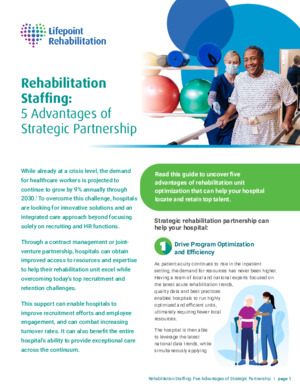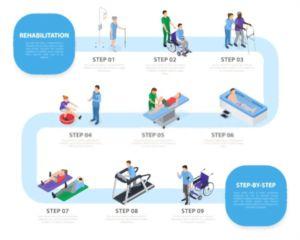The Ultimate Guide To Narconon Africa
The Ultimate Guide To Narconon Africa
Blog Article
The Best Strategy To Use For Narconon Africa
Table of ContentsNarconon Africa for DummiesSome Known Details About Narconon Africa See This Report on Narconon AfricaNot known Incorrect Statements About Narconon Africa The Ultimate Guide To Narconon AfricaThe smart Trick of Narconon Africa That Nobody is DiscussingThe Ultimate Guide To Narconon Africa
In a collection of documents with Manudeep Bhuller and Katrine V. Lken, we conquer these information difficulties and the nonrandomness of imprisonment, supplying new insights into just how incarceration influences relapse, employment, children, and criminal networks - Crack addiction rehabilitation. Number 1 Our job studies the impacts of incarceration in Norway, a setup with 2 key advantagesWe can additionally link this information to other relative, consisting of children and siblings. Additionally, we have information on co-offending that permits us to draw up criminal networks for observed criminal offenses. Second, we can utilize the random job of criminal cases to judges who vary in their propensities to send offenders to prison.
Some judges send out defendants to prison at a high price, while others are much more lenient. We gauge a court's stringency as the typical incarceration price for all other situations a court manages, after managing for court and year fixed results, which is the level of arbitrary assignment. This quasi-random task of court stringency can be made use of as an instrument for imprisonment, as it strongly forecasts the judge's choice in the present situation, yet is uncorrelated with various other case characteristics both deliberately and empirically.
Getting The Narconon Africa To Work
Qualities of detainees, consisting of demographics and crime groups, are extensively comparable in Norway and various other nations, consisting of the United States, with the exceptions that the United States homicide rate is a lot higher, and race plays a larger role there. What attracts attention as different, specifically compared with the USA, is the prison system.
Number 2In Norway, the typical time invested behind bars is a little over 6 months, which is comparable to most various other Western European countries. This contrasts with typical United States prison time of virtually 3 years, which is in big part the factor the United States is an outlier in its imprisonment rate compared to the rest of the globe [Number 1]
How Narconon Africa can Save You Time, Stress, and Money.
This provides a lot more separation between minor and hard wrongdoers than exists in the USA. There is no congestion in Norwegian jails and far better personal safety, with each detainee being assigned to their very own cell and a greater inmate-to-staff proportion than in the United States (https://narconon-africa-144820851.hubspotpagebuilder.eu/blog/narcononza12). Jails in Norway also provide well-funded education and learning, medicine treatment, psychological wellness, and task training programs
Our research on the results of incarceration on the wrongdoer, using the random project of judges as an instrument, yields 3 crucial searchings for. Jail time dissuades better criminal behavior. We discover that incarceration decreases the possibility that a person will reoffend within 5 years by 27 percentage points and reduces the equivalent number of criminal costs per individual by 10 fees.
Not known Factual Statements About Narconon Africa
We locate substantial declines in reoffending possibilities and cumulative charged criminal activities also after offenders are launched from prison. Our 2nd outcome is that prejudice because of choice on unobservable individual qualities, if neglected, causes the erroneous final thought that time spent behind bars is criminogenic. If we just compare criminal offenders sentenced versus those not imprisoned, we locate favorable associations between incarceration and succeeding crime.
This stands in comparison to our evaluation based upon the arbitrary task of courts, which locates an opposite-signed outcome. Third, the decrease in criminal offense is driven by individuals who were not functioning before incarceration. Among these individuals, imprisonment boosts involvement in programs directed at improving employability and decreasing recidivism, and this ultimately elevates employment and incomes while discouraging criminal habits.

Imprisonment creates a 34 percentage point boost in involvement in task training programs for the formerly nonemployed, and within 5 years their employment price boosts by 40 portion points. At the same time, the probability of reoffending within 5 years is cut by 46 percent points, and there is a decline of 22 in the ordinary variety of criminal costs.
The 6-Minute Rule for Narconon Africa

A possible description for the difference is that Norway's jail system differs significantly, both in regards to prison-term size and prison problems, from the US prison system. While recognizing the impacts of imprisonment on the offender is a crucial very first step, capturing spillover impacts is additionally crucial for evaluating criminal justice policy and designing effective jail systems.
Rumored Buzz on Narconon Africa

Normal the very least squares approximates reveal that kids of incarcerated fathers are 1 percentage point more most likely to be billed with a criminal offense, about a mean of 13 percent, and reveal no impact on institution qualities. Using our judge stringency instrument, we locate no statistical evidence that a father's incarceration influences a child's very own criminal activity or school grades, yet we are unable to dismiss modest-sized results.
The 7-Minute Rule for Narconon Africa
We specify criminal groups based upon network links to previous criminal cases. Our analysis returns 3 primary findings. When a criminal network participant is put behind bars, their peers' likelihood of being billed with a future criminal activity lowers by 51 portion factors over the next 4 years. Also, having an older sibling incarcerated lowers the pop over to this site possibility his younger brother will be charged with a crime by 32 percent points over the following 4 years.
Report this page